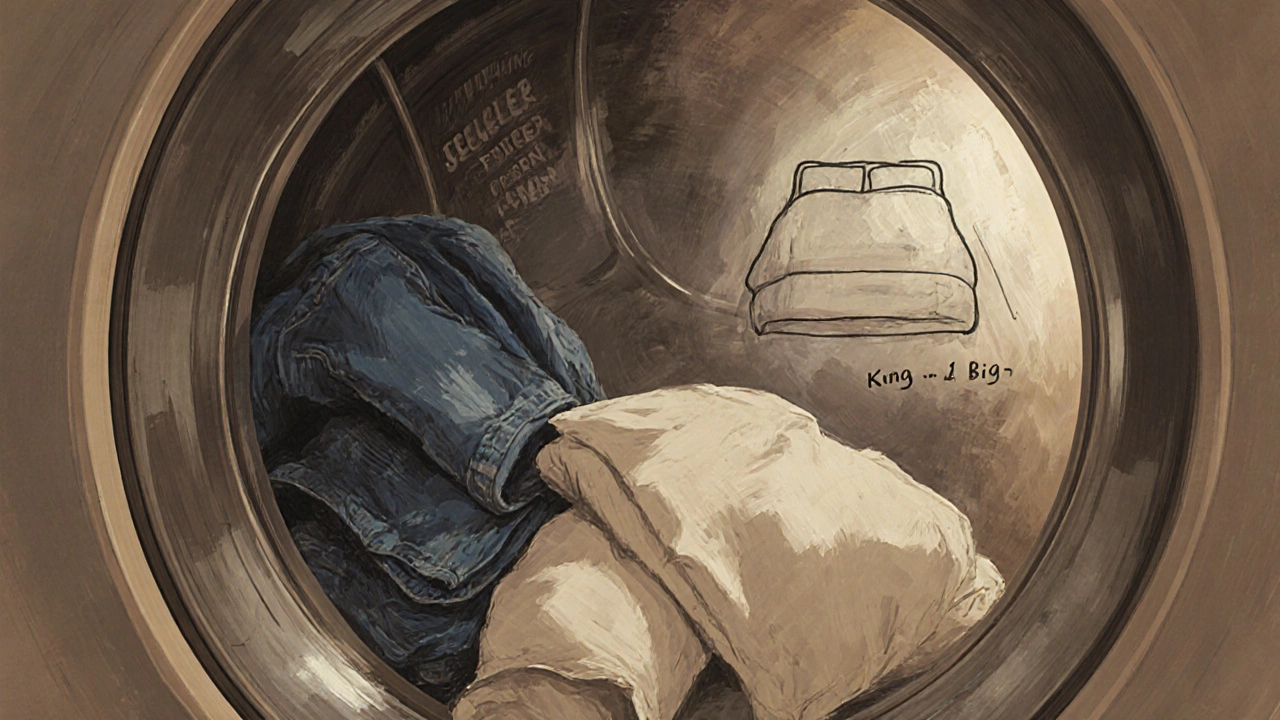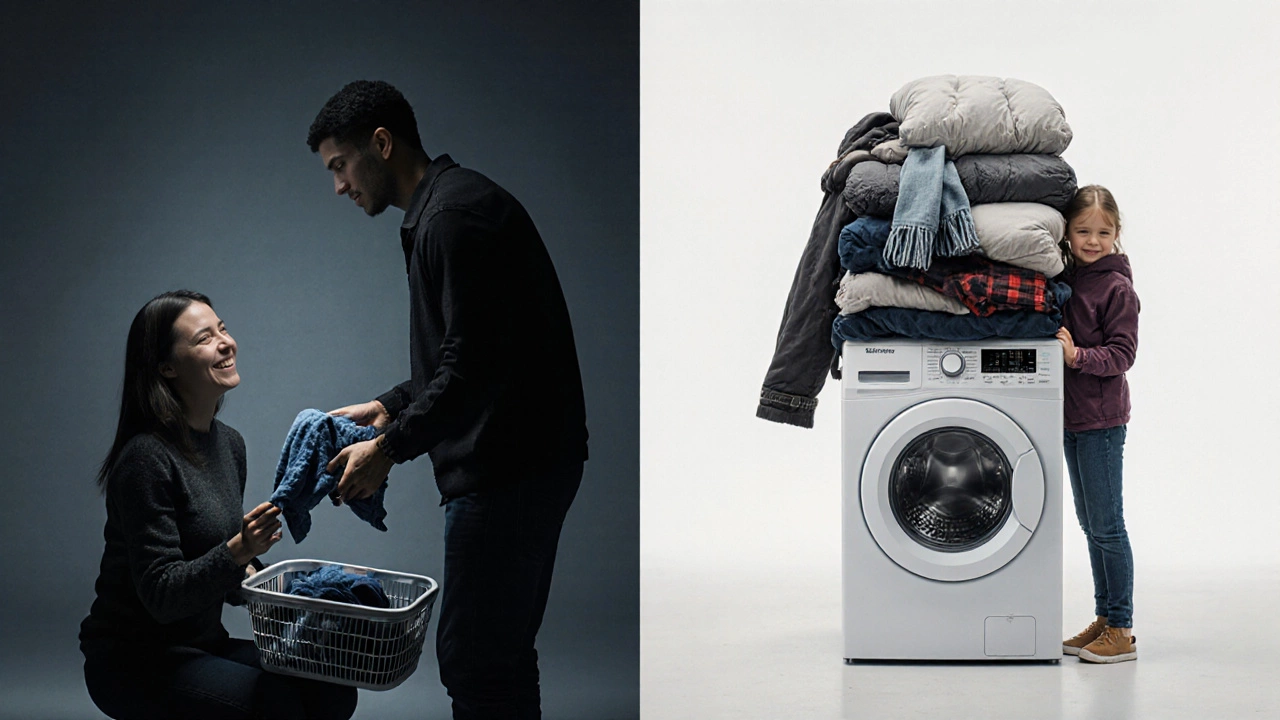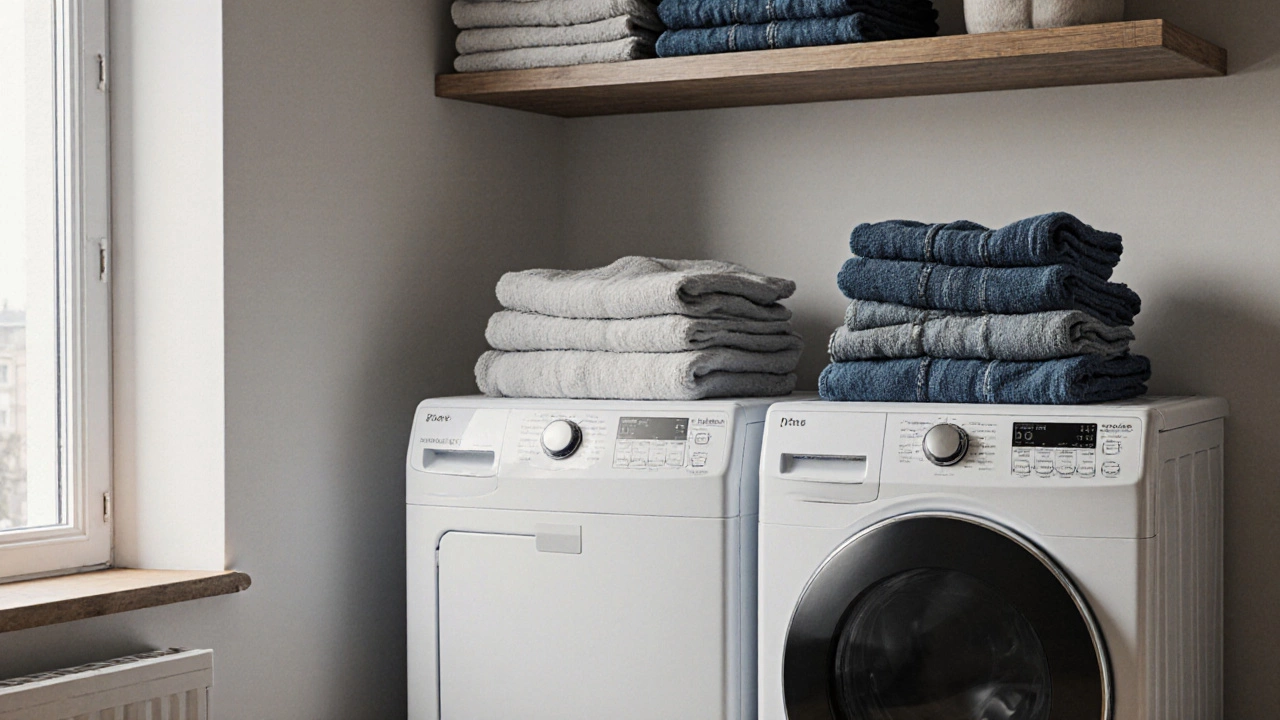Laundry Capacity Calculator
A 5 cubic feet washer handles about 20-25 pounds of dry laundry (with 20% empty space for movement). This calculator helps determine if your household needs fit this capacity.
Based on real-world laundry data from the article. Remember: Overfilling can damage your machine and reduce cleaning efficiency.
Calculate Your Laundry Needs
When you’re shopping for a new washing machine, size matters more than you think. A 5 cubic feet washer sounds compact, but is it actually big enough for your family’s laundry? The answer isn’t simple-it depends on how much you wash, what you wash, and how often you do it.
What does 5 cubic feet really mean?
Washer capacity is measured in cubic feet, which tells you how much space is inside the drum. A 5 cubic feet washer can handle about 20 to 25 pounds of dry laundry. That’s roughly five full loads of towels, or about seven pairs of jeans and a few shirts. For comparison, a standard full-size washer is usually between 4.3 and 5.5 cubic feet, so a 5 cubic feet model sits right in the middle of the range.
But here’s the catch: capacity doesn’t mean you should fill it to the brim. Manufacturers recommend leaving about 20% of the drum empty so clothes can move freely. That means you’re really working with closer to 4 cubic feet of usable space. If you toss in a king-size comforter or a pile of muddy work clothes, you’ll quickly hit that limit.
Who is a 5 cubic feet washer actually good for?
Small households-like singles, couples, or people living in apartments-often find a 5 cubic feet washer perfect. If you do laundry once or twice a week and mostly wash everyday clothes, socks, underwear, and light towels, you won’t feel cramped.
Think about this: a typical load of laundry for one person is about 3 to 5 pounds. That means a 5 cubic feet washer can handle four to eight loads per week without breaking a sweat. That’s enough for most people living alone or with one other person.
It’s also a great fit for people who live in tight spaces. Compact washers with this capacity are often stackable or designed to fit under counters. If you’re in a studio apartment, dorm room, or RV, you’re not sacrificing performance for size-you’re just being smart.
When a 5 cubic feet washer isn’t enough
If you have three or more people in your home, or if you regularly wash bulky items, you’ll run into problems. A king-size comforter alone can take up nearly half the drum. A set of heavy winter blankets? That’s another two or three loads. A family with kids who come home muddy from sports or play outside every day? You’ll be doing laundry almost daily just to keep up.
And then there’s the time factor. If you’re limited to 5 cubic feet, you’re likely doing more loads. That means more trips to the laundry room, more detergent use, and more wear on your machine. Over time, that adds up-not just in money, but in frustration.
Some people think they can just wash smaller loads to make it work. But that’s inefficient. Running a full load uses about the same amount of water and electricity as a half-load. So if you’re only washing five pounds at a time, you’re wasting energy-and money.

What about high-efficiency washers?
Many 5 cubic feet washers are high-efficiency (HE) models. These use less water and energy, and they spin faster to extract more moisture. That’s good news for your utility bills. But HE washers also have a different loading style-they’re front-loading and rely on tumbling instead of an agitator. That means clothes need room to move. Overstuffing an HE washer can lead to poor cleaning, unbalanced spins, and even damage to the machine.
Also, HE detergents are required. Using regular detergent in an HE washer creates too many suds, which can overflow and leave residue. It’s a small detail, but one that trips up a lot of first-time buyers.
Real-world examples: What fits in 5 cubic feet?
Let’s break down actual loads you can reasonably fit:
- 12 regular t-shirts and 6 pairs of underwear
- 5 pairs of jeans and 4 shirts
- 4 bath towels and 2 hand towels
- 2 queen-size fitted sheets and 4 pillowcases
- 1 lightweight duvet cover and 2 pillowcases
Now, what won’t fit:
- King-size comforter
- Two heavy winter coats and a blanket
- 5 bath towels, 5 hand towels, and 2 sheets
- Dirty sports gear: cleats, pads, jerseys, and gym bags
If your laundry basket looks like the last group, you’re better off with a 6 cubic feet or larger washer.

What’s the next step up?
If you’re on the fence, consider a 6 cubic feet washer. It’s not much bigger in footprint, but it can handle 30% more laundry. That means you can wash a king-size comforter, a full load of towels, and a few shirts all at once. Many 6 cubic feet models still fit in the same space as a 5 cubic feet unit, especially if you’re buying a front-loader.
And prices? They’re not much higher. A good 5 cubic feet washer costs between $600 and $900. A 6 cubic feet model runs $700 to $1,000. The extra $100 to $200 buys you flexibility-and fewer loads.
Final advice: Measure your space, then your habits
Before you buy, ask yourself:
- How many people live in your home?
- Do you wash bulky items like bedding or coats?
- How often do you do laundry?
- Do you have space for a larger machine?
If you answered mostly ‘one or two people’ and ‘no bulky items,’ then a 5 cubic feet washer is perfectly fine. It’s efficient, affordable, and just right for light to moderate use.
If you have kids, pets, or a habit of washing comforters, towels, or sports gear, go bigger. You’ll save time, money, and stress in the long run.
There’s no magic number. But if your laundry pile keeps spilling over the basket, your washer might be too small-even if it’s labeled ‘5 cubic feet.’
Can a 5 cubic feet washer handle a king-size comforter?
No, a king-size comforter typically requires at least 6 cubic feet of space to wash properly. Even if it fits physically, it won’t clean well or spin evenly in a 5 cubic feet washer. You’ll risk damaging the machine or leaving the comforter damp and wrinkled.
Is a 5 cubic feet washer energy efficient?
Yes, most 5 cubic feet washers are high-efficiency models, which use up to 50% less water and 30% less electricity than older top-loaders. They’re rated for Energy Star compliance, so they’re among the most efficient machines on the market-if you run full loads.
How many loads can I do in a week with a 5 cubic feet washer?
You can comfortably do 4 to 7 loads per week with a 5 cubic feet washer, depending on household size. One person? Two to three loads. Two people? Four to five. Three or more? You’ll likely need six or more, which means planning ahead or upgrading.
Do I need special detergent for a 5 cubic feet washer?
Yes-if it’s a high-efficiency (HE) washer, which most 5 cubic feet models are. HE detergent is low-sudsing and designed for less water. Using regular detergent can cause overflow, residue buildup, and even damage the drum seals. Always check the label.
Can I stack a 5 cubic feet washer with a dryer?
Yes, many 5 cubic feet washers are designed to be stackable with matching dryers. This is ideal for small spaces like apartments or closets. Just make sure both units are stackable models and use a stacking kit for safety. Always follow the manufacturer’s instructions.

